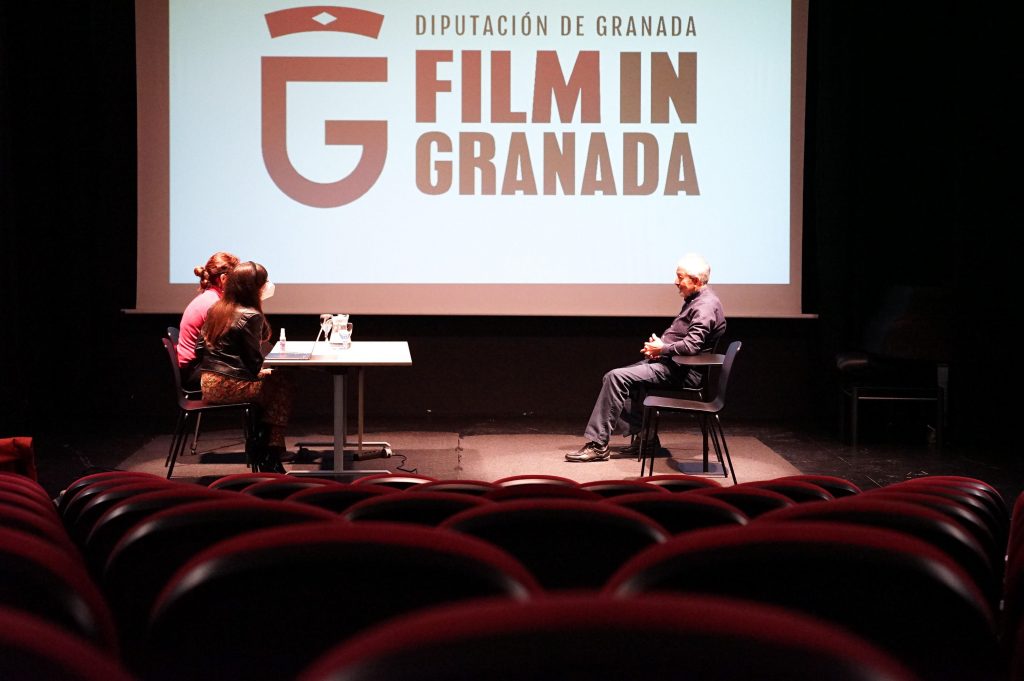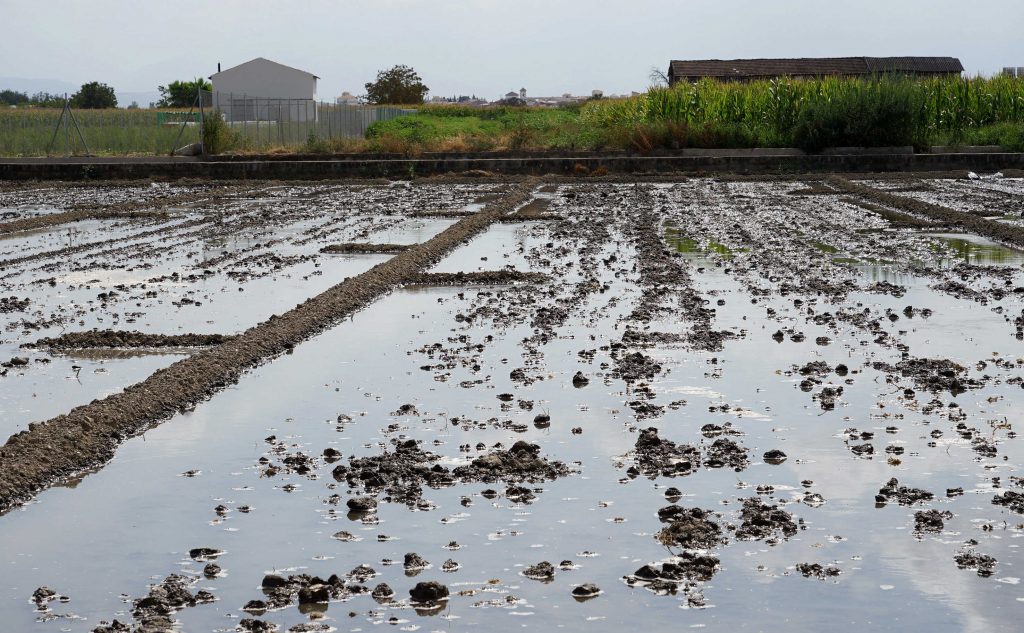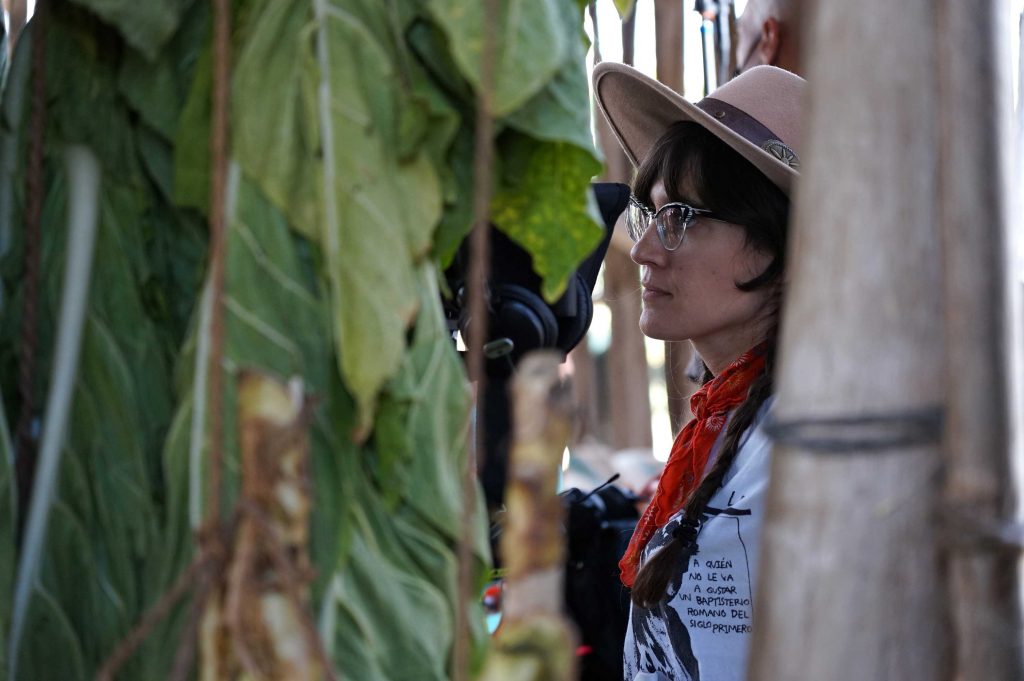Text & photos: Julio Grosso Mesa (Film in Granada)
After graduating as a journalist at the University of Seville’s Faculty of Communication, Rocío Mesa (Granada, 1983) was awarded a Talentia scholarship in 2010 by the Junta de Andalucía that let her pursue a Master’s degree on Documentary Direction at the New York Film Academy. It was there in the United States where she began to shoot her first works.
Her first experience directing a feature film, Orensanz (2013), which is about the contemporary artist Ángel Orensanz, was described when released as “the antithesis of the biopic” by critics, and it premiered at the Seville European Film Festival with an excellent reception and an outstanding international path. After this, Rocío has worked on projects where she combined audiovisual management with production, especially with her company My Deer Films, an independent production enterprise specialized in creative documentary, which has produced titles such as Mbah Jhiwo / Alma anciana (2021) by Álvaro Gurrea, premiered at Berlinale Forum 2021.
She is currently living and working in California, where she is the director of LA OLA (Spanish Contemporary Cinema Showcase), an entity that, based in Los Angeles (American Cinematheque), New York (Anthology Film Archives) and Mexico City (Cineteca Nacional), aims to make contemporary Spanish cinema visible in North America.
Now in 2021 she has spent half of her year in Granada, her homeland, where she is intending to shoot her second feature, Secaderos (2021), a magical and very personal story produced by Olmo Figueredo from La Claqueta, filmed entirely in LaVega de Granada.

From Las Gabias to Los Angeles, passing through Seville… What did you learn from such a journey?
I learnt that happiness and peace do not depend on where you are, they are always within yourself. Also that it is not true that “if you want you can”, because believing in it would be believing in the lie that is meritocracy, but things like scholarships and public aid are there for you to try, and sometimes thanks to them you can achieve your goals.
What opportunities can a young female Spanish filmmaker find in the USA?
I’m certainly unaware of it, especially because I’m not too interested in commercial cinema and I move around more underground and experimental spaces. However, what I do know is that we have a lot to offer to the United States. From this conviction “LA OLA” emerged, a Spanish independent film exhibition project that I started with other fellow filmmakers about 7 years ago. Thanks to this project, we have exhibited the most avant-garde Spanish films in cities such as New York (Anthology Film Archives), Los Angeles (American Cinematheque) and even Mexico City (Cineteca Nacional).
Your professional career began with journalism, but you soon moved to audiovisual communication, where you have worked in management, production, direction and post-production positions. What of those perspectives are you most comfortable with?
Creation makes me feel very organic. Writing, editing, building with images… all that brings me back to the innocent happiness of a girl when playing, and it makes me feel like returning to my essence. I began to do other tasks less related to the creative and closer to the organizational side of cinema to earn a living. However, once I had seen and learned about the ins and outs of this industry, it seemed to me that the best thing was to use that knowledge in favor of my community, the independent cinema community. I really like to think about the beauty of the collective, as well as the reciprocity or the union of minorities. In this way I have ended up producing feature films such as Mbah Jhiwo / Alma Anciana, directed by Alvaro Gurrea, which we premiered at the Berlinale earlier this year.

You have been living in California for over a decade now. How did this trip back to Granada in order to shoot “Secaderos” come about?
I think I wrote Secaderos precisely because I wanted to return to my land. Through art we can provoke events that otherwise would not happen.
“Secaderos” has been developing for many years. It was first thought of as a documentary and was finished as a fiction feature. How did you come to this change?
I really don’t believe in the division between fiction and non-fiction. Everything is creation.
What have been your cinematographic references when creating this story?
Agnès Varda, Lucrecia Martel, Alice Rohrwacher, Mercedes Álvarez, Neus Ballús… a lot of women who taught me that there is another way of making cinema and who, above all, made me believe that perhaps I, being so tiny in comparison, could also try.

More than 2,000 people from Granada signed up for the movie’s casting, and you then auditioned and rehearsed with 150 of them for more than a month. Why did you choose this process and opt for non-professional actors for the lead roles?
Reality will always be more surprising than any fiction I can create. People fascinate me much more than characters. Therefore, I was interested in meeting local people that could be close to the story I had written and who wanted to bring “that truth” to the film. The casting process was very powerful and vulnerable, I almost conceived it as a separate project because it required a lot of emotional commitment. The results have been magical, without a doubt the most beautiful thing about “Secaderos” is the cast. In this sense, I have to thank my partner Marichu Sanz, casting director, for believing in my peculiar vision and accompanying me during the process in such an accurate way.
The film has been shot in La Vega de Granada in its entirety. What role does the landscape of this region play in the story?
The landscape is the seed of this film, the rest of the movie elements merged from it. I was obsessed, among other things, by the phantasmagoric presence of the abandoned tobacco drying rooms, the gentle perspectives of the poplar groves and the flat Vega in contrast to the majestic Sierra. I have always been tormented by the idea of building single-family houses on fertile agricultural spaces because of the land requalification. All these thoughts never left me, no matter how far away I was.

Secaderos has had the support of institutions such as Diputación de Granada and the Town-Councils of the shooting area. How important have they been in your project?
This film couldn’t have been made without the support of public institutions and local councils. They have helped us by providing locations, getting extras, building sets, talking to farmers… It has really been a beautiful collaboration, a collective work by the entire region. Our intention is to return to the cultural heritage all the love that we have received, which has been a lot. It excites me and makes me very proud of our land.
What did you have to give up in order to shoot your first feature film in Granada?
I didn’t give up on anything. There is no resignation in this project, only dedication and gratitude.
For the filming process, you have surrounded yourself with a team of Andalusian professionals and companies, some of them from Granada. What is the Andalusian audiovisual situation like as seen from Los Angeles?
Indeed, we have made a great effort to incorporate local talent into the crew, I would say that 90% of them are Andalusian. And we also have many people from Granada involved in the project: from our dear producing colleagues from Fourminds, to freelance partners such as Marieta Bautista, Clara Saenz and Alba Sabio in production; Ana Arístegui as script; Lorena Fernández, Nuria Díaz Ibánez and Melania Van in the art department; Maria Luisa as extras caretakers; Marichu Sanz in casting; or Nerea Herrero in makeup and hairdressing; as well as all the workers in the hosterly sector, who have taken care of us wonderfully.

What would you say Granada needs in order to reach a position at the level of Seville or Malaga in the Andalusian and Spanish audiovisual industry?
The most important thing is to make cinema a fundamental piece of local culture thanks to public support. This will prevent brain drain and help create a call effect to industry professionals. It is essential to have quality educational film programs, independent exhibition rooms that are alternative to commercial ones, and active organizations such as the recently created Film in Granada.
I think that having consolidated and prestigious film festivals has been fundamental for the cities of Seville and Malaga. In that sense, I have high hopes for Granada’s Festival de Jóvenes Realizadores, which comes renewed from the hand of Antonio Arenas with a very avant-garde proposal in its design and programming.
Last summer three feature films were shot in the province of Granada. In all three cases they were directed by women: Macarena Astorga, Isabel Fernández and Rocío Mesa. Is it just a coincidence?
Of course it is not a coincidence. Positive discrimination in public aid and the recent feminist movements have helped us female creators to break the glass ceiling that previously was practically imperishable.
During the casting process for “Secaderos” we brought together a group of women that were over 60, and who were applying for secondary and supporting roles. We had a discussion in which I asked them: “What do you like the most in life?” and one of them answered: “To be able to live in this new era in which women are free, in which I can go out on the street and do what I want when I want. This didn’t happen when we were young and I feel very lucky to be experiencing it now”. All the other women decided that was the best answer. I think this anecdote says it all. They, who mostly grew up working in the fields, making rugs, sewing, caring for their families, raising their children… are currently attending castings to be actresses. If they had had more opportunities, perhaps they would have ended up being great directors.
And to finish this interview we have a classic American question: Where do you see yourself in ten years?
You know, I like being present and I don’t think too much about the future. Any way the wind blows is fine with me.



